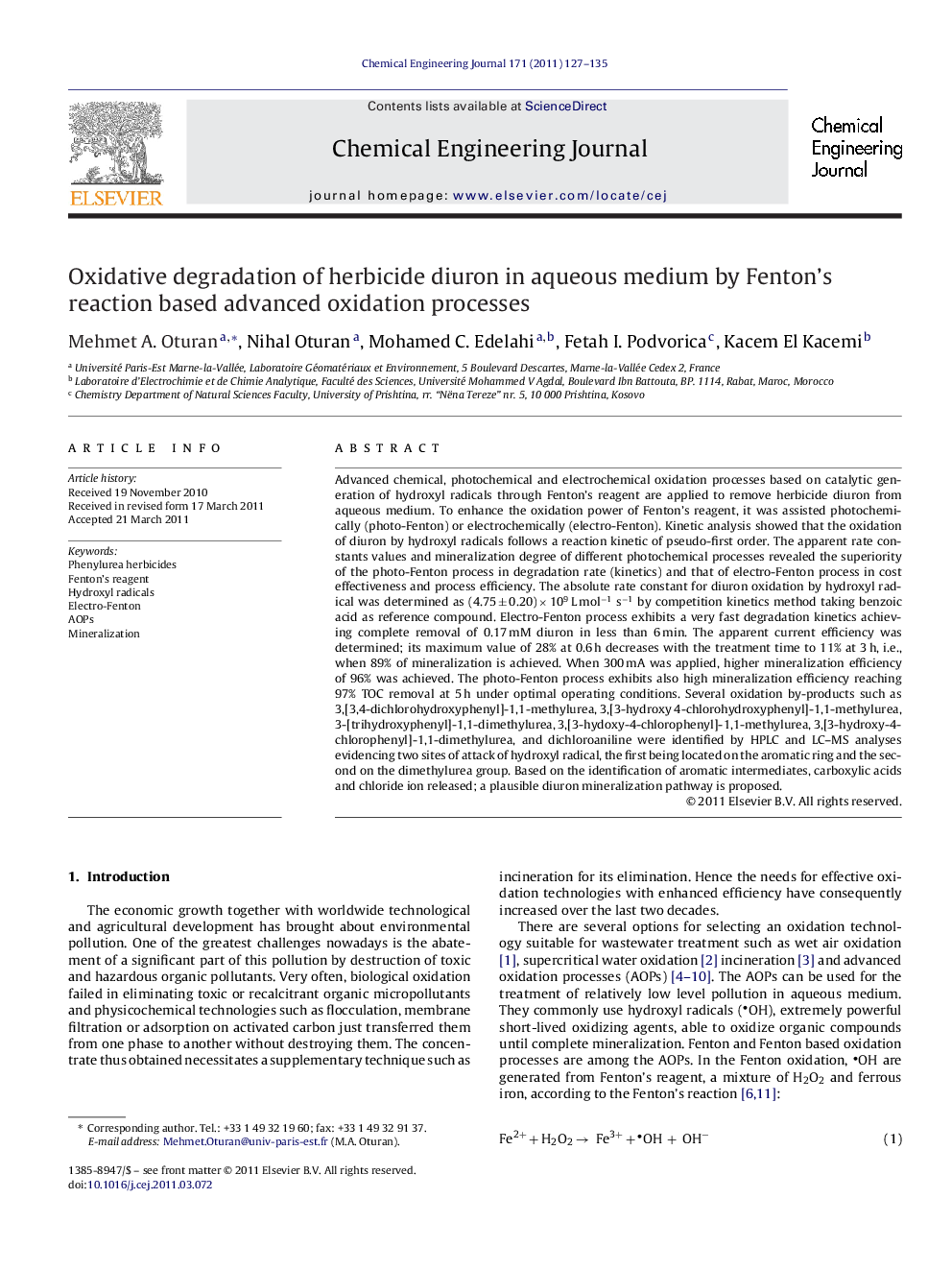| کد مقاله | کد نشریه | سال انتشار | مقاله انگلیسی | نسخه تمام متن |
|---|---|---|---|---|
| 150836 | 456458 | 2011 | 9 صفحه PDF | دانلود رایگان |

Advanced chemical, photochemical and electrochemical oxidation processes based on catalytic generation of hydroxyl radicals through Fenton's reagent are applied to remove herbicide diuron from aqueous medium. To enhance the oxidation power of Fenton's reagent, it was assisted photochemically (photo-Fenton) or electrochemically (electro-Fenton). Kinetic analysis showed that the oxidation of diuron by hydroxyl radicals follows a reaction kinetic of pseudo-first order. The apparent rate constants values and mineralization degree of different photochemical processes revealed the superiority of the photo-Fenton process in degradation rate (kinetics) and that of electro-Fenton process in cost effectiveness and process efficiency. The absolute rate constant for diuron oxidation by hydroxyl radical was determined as (4.75 ± 0.20) × 109 L mol−1 s−1 by competition kinetics method taking benzoic acid as reference compound. Electro-Fenton process exhibits a very fast degradation kinetics achieving complete removal of 0.17 mM diuron in less than 6 min. The apparent current efficiency was determined; its maximum value of 28% at 0.6 h decreases with the treatment time to 11% at 3 h, i.e., when 89% of mineralization is achieved. When 300 mA was applied, higher mineralization efficiency of 96% was achieved. The photo-Fenton process exhibits also high mineralization efficiency reaching 97% TOC removal at 5 h under optimal operating conditions. Several oxidation by-products such as 3,[3,4-dichlorohydroxyphenyl]-1,1-methylurea, 3,[3-hydroxy 4-chlorohydroxyphenyl]-1,1-methylurea, 3-[trihydroxyphenyl]-1,1-dimethylurea, 3,[3-hydoxy-4-chlorophenyl]-1,1-methylurea, 3,[3-hydroxy-4-chlorophenyl]-1,1-dimethylurea, and dichloroaniline were identified by HPLC and LC–MS analyses evidencing two sites of attack of hydroxyl radical, the first being located on the aromatic ring and the second on the dimethylurea group. Based on the identification of aromatic intermediates, carboxylic acids and chloride ion released; a plausible diuron mineralization pathway is proposed.
Journal: Chemical Engineering Journal - Volume 171, Issue 1, 15 June 2011, Pages 127–135